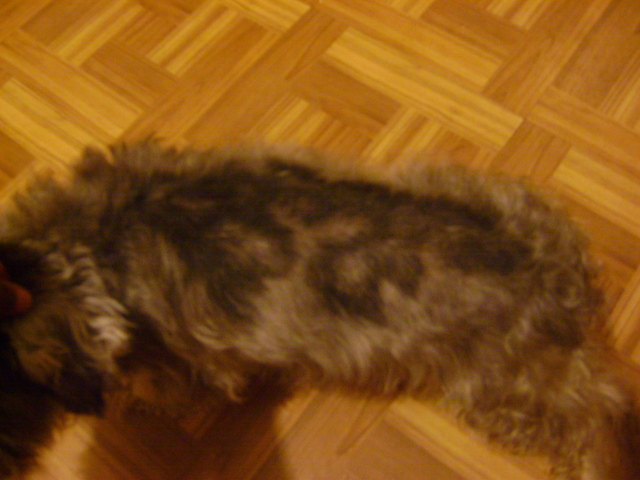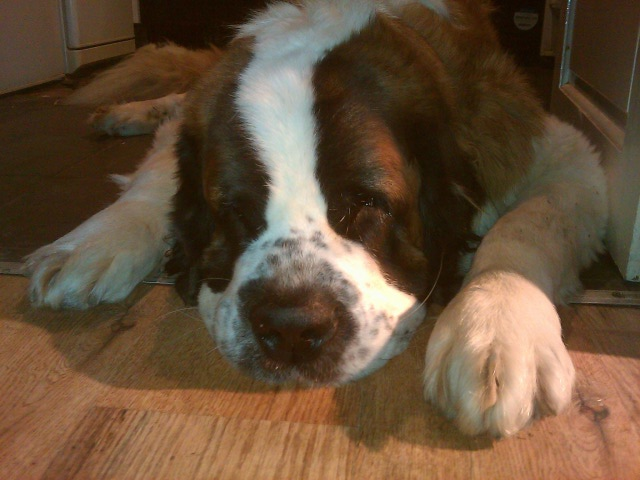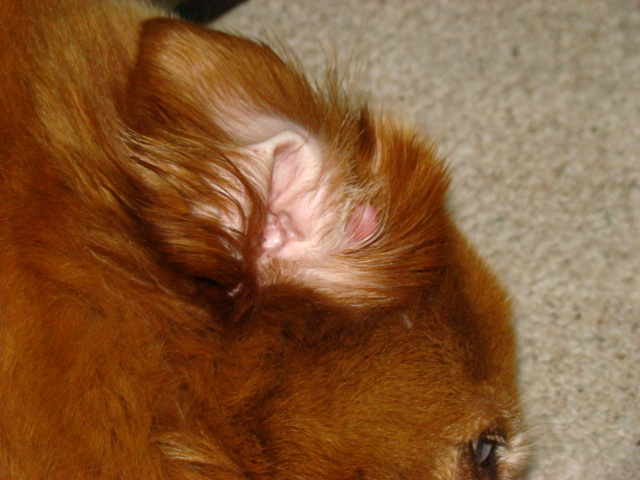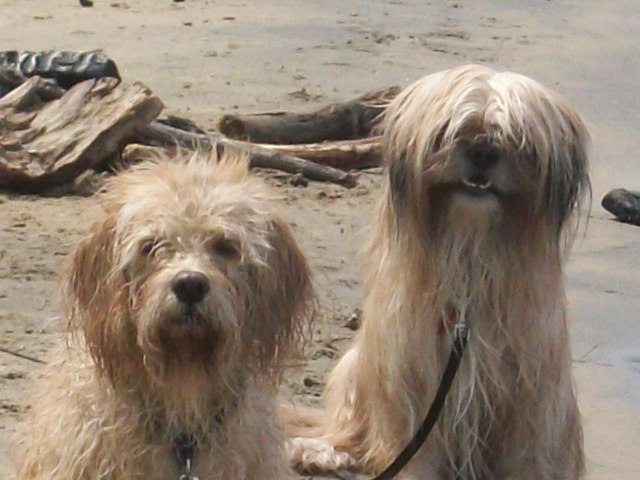QuestionHello- We have had a two year old Corgi for 3 weeks and she is frightened beyond belief. It is as if we don't have a dog. How do I let her know that we want to love her so much. Everyday I make efforts to pet her and take her for walks. She still is frightened.
AnswerQuestioner: Tanya
Category: Dogs
Private: no
Subject: New Dog Frightened
Question: Hello- We have had a two year old Corgi for 3 weeks and she is frightened beyond belief. It is as if we don't have a dog. How do I let her know that we want to love her so much. Everyday I make efforts to pet her and take her for walks. She still is frightened.
Answer: Hi Tanya,
Thank you for writing to me about your precious Corgi. I am so sorry to hear of her fear issues. It must be very difficult for you.
Even dogs that are happy and secure get scared once in a while. Strong noise, the unknown or strange objects alarm many dogs. Others are frightened of things, like a flight of stairs or the rustling of a newspaper. Sometimes there seems to be no motive for the dog's fear.
It is easy to know when dogs are afraid, but it's never easy to teach them to overcome their fears. This can be a slow process, for which you will have to have patience and perseverance.
Try To Get Your Dog Accustomed:
A dog that is used to daily hustle and bustle, to the sounds of traffic, to the sounds of shutting doors or to strangers will get accustomed and lose it's fear before a dog that is constantly protected by its owner.
It is important to socialize your dog and get it used to everything in a calm and gentle manner.
Slowly introduce your dog to other people to sounds and it is facing new experiences and new encounters. Do this for very short periods of time so as not to overwhelm or create stress.
Act Natural:
Dogs usually take their examples from their owners and from people that are in it's environment. If your body language reflects that you are frightened of certain situations, it is possible that your dog will also feel it. Act calmly and without any preoccupation and your dog will be less scared.
Leave the Arms For Later:
To fondle a frightened dog or to talk to it sweetly when it's in a state of fear, actually reinforces that fear. Your dog may not understand and may think that you are praising it for being scared. The best think to do is to divert your dog's attention from the object that produces the fear reaction. Give your dog a treat or something to play with that will help. When something frightens your dog, but is dealt with in a good way, praise and fondle your dog at that time. What you are then doing is rewarding for good or desired behavior.
Other Approaches:
Take long walks of at least 45 minutes a day. Exercise releases chemicals in the brain that are calming.
Try to introduce your dog to a play group of dogs that are very gentle. Start with one on one and choose a playmate that is very calm and submissive. Introduce them in neutral territory and let them interact at their own speed. Do not try to force the situation.
Buy some Rescue Remedy and put 12 drops in your dog's water bowl every morning. You can also rub some on it's gums.
There is a product that might be helpful. It's called an anxiety wrap. This wrap was originally invented for dogs who were afrain of thunder and it was known as a thunder wrap. After awhile it became apparent that the wrap was effective for many forms of anxiety. You can find this product at www.sitstay.com/
Give your dog a raw marrow bone or smoked marrow bone to chew on (never a cooked bone). Chewing can help relieve stress.
Provide a crate (never force a dog into a crate who isn't already crate trained) or small area that mimicks a cave. Place your dog's bed in there with some toys and even consider placing a ticking clock in there or a sound machine mimicking the mother's heartbeat. Having a special place to go can make a dog feel safe and relaxed.
If all else fails you may have to hire a behavorist to help you solve the problem of your dog's irrational fear. Please be patient as 3 weeks is not a lot of time for a dog who may have been traumatized. Never force your affections or attention on a dog who is experiencing fear. It may take time for her to become fully adjusted.
You can set aside some quiet time where the two of you sit together listening to soft classical music or watching the sunset...calm..bonding, time.
Get some books on how to understand canine body language and how to relate to your dog in dog talk. This is very important because you may unknowingly be triggering more fear by your body language.
Here is one of my book lists:
Culture Clash by Jean Donaldson
Dogs are from Neptune by Jean Donaldson
The Cautious Canine by Patricia B. McConnell (desensitization)
Your Shy Dog: Turning Your Terrified Dog into a Terrific Pet by Deborah Wood
Shoot the Dog!: The New Art of Teaching and Training by Karen Pryor
Getting Started: Clicker Training for Dogs (Getting Started) by Karen Pryor
How to Teach a New Dog Old Tricks by Ian Dunbar
Doctor Dunbar's Good Little Dog Book by Ian Dunbar
I wish you the very best of luck with your precious Corgi.
Regards,
Shelley Davis

 Thining hair on back/back hair darkening
Question
Dogs Back
Please Help!
I have a 4 year miniatu
Thining hair on back/back hair darkening
Question
Dogs Back
Please Help!
I have a 4 year miniatu
 maltese with brown ears
Question
maltese
we bought a dog and owner said its pur
maltese with brown ears
Question
maltese
we bought a dog and owner said its pur
 st bernard archy.
QuestionQUESTION: I have a four year old st bernard. I
st bernard archy.
QuestionQUESTION: I have a four year old st bernard. I
 Ear Care
Question
Erins Ear 2
I had my dog groomed two days ago
Ear Care
Question
Erins Ear 2
I had my dog groomed two days ago
 re: dog breed
Question
Dog pic question about
Hi Patti,
I took in a
re: dog breed
Question
Dog pic question about
Hi Patti,
I took in a